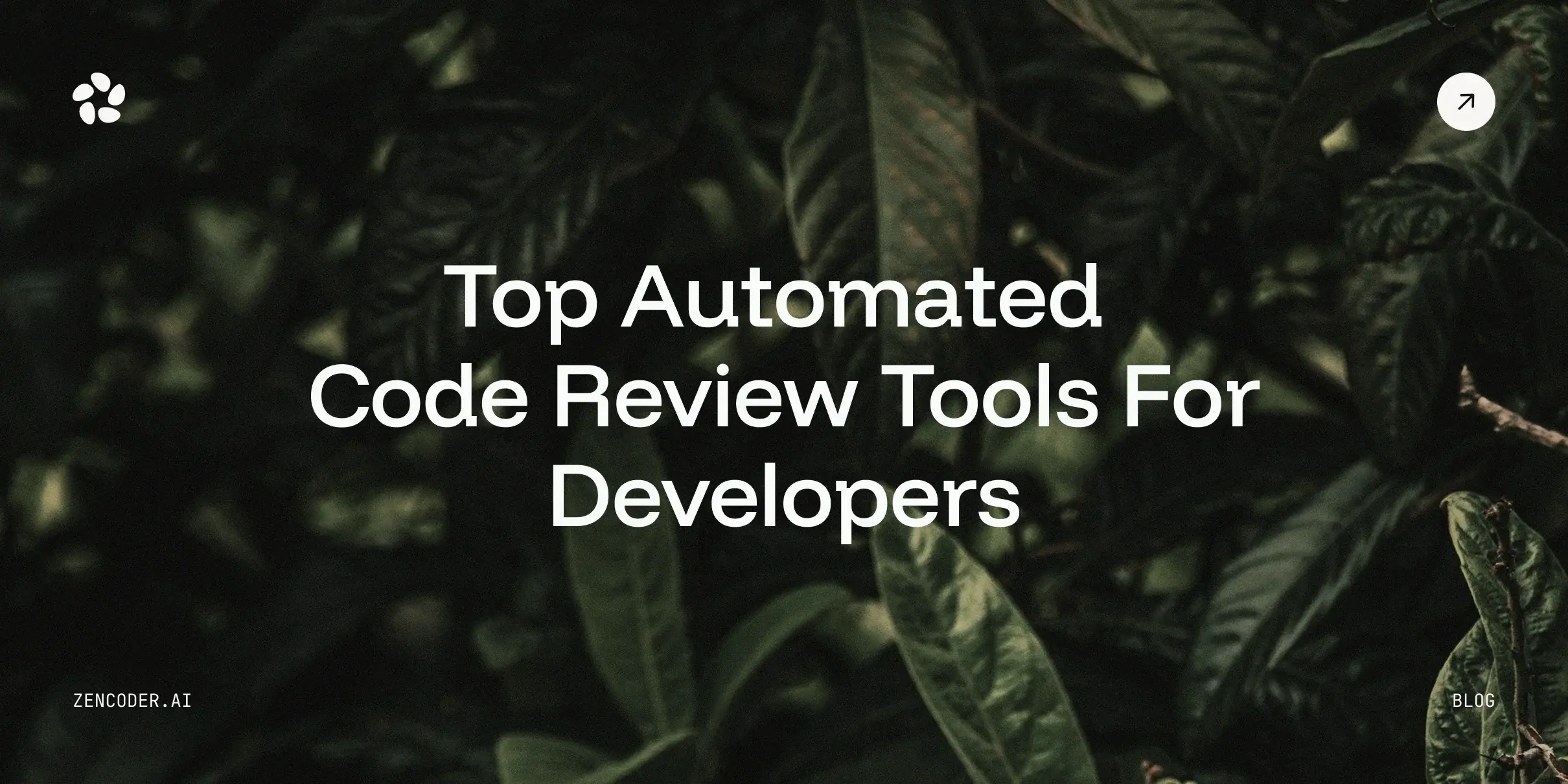Are you frustrated that bugs still make it into production even after a thorough code review? According to a recent study, code reviews during development can reduce the number of bugs by approximately 36%. However, many issues still go unnoticed, whether due to time constraints, overlooked edge cases, or reviewers not catching subtle mistakes. In this article, you will learn 6 code review best practices to improve accuracy, catch more defects, and make your reviews more effective. Let’s get started!
The Importance of Code Reviews
Code reviews help teams maintain consistency, improve collaboration, and reduce errors. Without them, developers may follow their own practices, leading to confusion, inefficiencies, and a higher risk of shipping faulty code. Here’s why they matter:
- Early bug detection – Identifying and resolving bugs before code reaches production helps reduce costs, prevent future issues, and improve overall software stability.
- Consistent code quality – Enforcing coding standards and best practices ensures that the code remains clean, readable, and easy to maintain over time.
- Stronger team collaboration – Reviewing code as a team fosters knowledge sharing, enhances communication, and helps developers learn from one another, especially junior team members.
- Reduced technical debt – Regularly reviewing code prevents unnecessary complexity, keeps the codebase optimized, and reduces long-term maintenance challenges.
- Enhanced security – Carefully inspecting code helps identify potential vulnerabilities early and ensures that security best practices are consistently followed.
Limitations of Traditional Code Review Practices
Traditional code reviews depend heavily on manual processes, requiring participants to read through code, cross-check documentation, and track feedback across multiple platforms. This approach comes with several key limitations:
- Human error and inconsistency – Developers might accidentally overlook important details, such as missing lines of code, incorrect library usage, or critical issues hidden within large commits.
- Feedback fatigue – When reviewers handle too many requests, they can become less thorough over time. To speed things up, they may skip deeper checks, which defeats the purpose of the review process.
- Scaling challenges – As teams grow, relying solely on manual reviews becomes unsustainable. Without automation or structured processes, the increasing volume of code changes can overwhelm reviewers, leading to missed issues and chaotic communication.
6 Code Review Best Practices to Help You Streamline Workflow
1. Keep Code Reviews Manageable
When submitting a pull request, try to limit the number of lines of code to a manageable size. A study involving a Cisco programming team revealed that developers should review no more than 200 to 400 lines of code at a time. That threshold helps you to stay focused, leading to a more detailed review and a higher chance of catching defects. Instead of submitting massive changes all at once, break them into smaller, logical chunks. While it might seem like extra work, it makes reviews more effective and ensures higher code quality in the long run.
💡 Pro Tip
Sometimes, larger updates across multiple files are unavoidable. That’s where Zencoder’s Multi-File Editing proves useful. This feature helps you efficiently apply and review changes across multiple files, making big edits more manageable. It allows you to:
- Quickly iterate on changes without losing context.
- See diffs directly in the editor and review them in place.
- Ensure everything stays organized before submitting your pull request.
2. Take Your Time with Code Reviews
Speeding through a code review can cause important issues to be overlooked. Instead of rushing, aim to review at a steady pace, ideally, no more than 500 lines of code per hour. This allows you to thoroughly read, analyze, and mentally test the code. When reviewers try to power through massive features too quickly, they often miss critical bugs or provide incomplete feedback.
For example, the Heartbleed vulnerability in OpenSSL, which remained undetected for nearly two years, exposed millions of users' sensitive data. Attackers could exploit this flaw to steal passwords, encryption keys, and personal information. Despite OpenSSL being open-source, which typically allows for community inspection and contribution, the bug slipped through due to inadequate inspection. A more thorough and timely review could have caught the issue before it caused global security breaches.
3. Set Clear Goals and Track Progress
Set measurable goals to keep your team aligned and focused. Clear objectives, such as reducing production defects by a certain percentage or shortening the time it takes to approve code, can drive continuous improvement. To track progress effectively, implement these key metrics:
- Inspection rate – Measures how quickly code reviews are completed, ensuring that changes move through the pipeline efficiently.
- Defect rate – Tracks the number of bugs found per hour or review, helping identify potential quality issues early.
- Defect density – Calculates the average number of issues found per line of code, giving insight into overall code quality.
- Review coverage – Indicates the percentage of code that undergoes review, ensuring critical parts of the codebase receive adequate scrutiny.
- Time to resolution – Measures the average time taken to fix identified defects, highlighting efficiency in addressing code issues.
4. Develop Structured Review Checklists
Developers often commit similar errors, ranging from off-by-one mistakes to security oversights. A structured checklist helps minimize these mistakes and ensures consistency across code reviews. Here’s what to include:
- Required features – Ensure the code implements all intended functionality, covers edge cases, and meets user and stakeholder requirements.
- Readability – The code should have a logical structure, clear function boundaries, and meaningful naming. If it’s hard to follow, it’ll be harder to test and maintain.
- Maintainability – Watch for hard-coded values, outdated dependencies, and unnecessary complexity. The code should be modular and easy to update in the future.
- Security measures – Ensure user inputs are sanitized, authentication is correctly implemented, and there are no vulnerabilities like SQL injection or hard-coded credentials.
- Performance – Identify potential bottlenecks and inefficiencies. The code should be optimized to scale without dragging down system performance.
- Documentation – New classes, methods, and APIs should be clearly documented, explaining key design decisions to help team members understand and maintain the code.
- Naming conventions – Variable, function, and class names should follow project standards and be consistently applied for clarity across the codebase.
💡 Pro Tip
Many teams struggle with ensuring that documentation is both complete and up to date. Zencoder’s Docstring Generation feature automatically generates clear, descriptive docstrings that align with your team’s style and naming conventions. During a review, these AI-generated docstrings can help reviewers understand new classes or methods faster and see if the code aligns with the intended functionality.

5. Automate Code Reviews with AI
Use AI tools to streamline repetitive tasks and reduce the manual effort involved in code reviews. This way, you can focus on high-impact improvements like refining architecture, strengthening security, and optimizing performance. Studies show that AI-powered testing can boost defect detection rates by up to 90%, significantly reducing the chances of human oversight. Here’s how AI enhances code reviews:
- AI-powered checker & static analysis – Intelligent tools detect style inconsistencies, potential bugs, and security vulnerabilities in real time, minimizing trivial feedback loops.
- Automated code refactoring – Smart algorithms suggest optimized refactoring techniques to improve code readability and maintainability.
- AI-driven test generation – Unit tests can be generated automatically, ensuring better test coverage and catching edge cases early.
- Smart CI/CD integration – Machine learning models optimize build times, predict deployment risks, and detect anomalies in the pipeline before they become major issues.
Here are some of the key benefits of AI automation:

💡 Pro Tip
With Zencoder’s AI Agents, your code review process becomes smarter, faster, and more efficient. These AI-powered assistants seamlessly integrate into your workflow to improve code quality and streamline development. Here is what they help you with:
- Reduce debugging time – AI Agents continuously analyze your code, detecting and resolving issues in real-time to maintain a clean, optimized codebase.
- Automate routine tasks – From generating unit tests to refactoring code and updating documentation, these agents handle repetitive tasks so you can focus on complex problem-solving.
- Enhance decision-making – Intelligent agentic chats provide well-structured insights and recommendations, helping developers refine their coding strategies with data-driven decisions.

6. Run Tests Before Requesting a Review
Catching bugs early is one of the most effective ways to reduce development costs. Studies show that fixing defects in the early stages can be up to 100 times cheaper than addressing them after release. Running all tests, including unit and integration tests, helps catch errors early and ensures new changes don’t accidentally break existing features.
Here is how you can do it in 5 easy steps:
🟢 Step 1: Run existing tests – Execute the test suite to check for any failures before submitting your code for review.
🟢 Step 2: Add or update tests – If you've introduced new functionality or modified existing code, update or write new tests to cover these changes.
🟢 Step 3: Fix any issues – Address any test failures before moving forward. Debug and refine your code as needed.
🟢 Step 4: Verify edge cases – Ensure your tests cover a variety of scenarios, including edge cases, to catch potential issues.
🟢 Step 5: Re-run tests – After making changes, run the tests again to confirm everything still works as expected.
💡 Pro Tip
With Zencoder’s Unit Test Generation, you no longer have to spend time writing repetitive test cases because AI handles them for you. Automated test generation ensures tests are created and executed before a pull request, eliminating much of the manual back and forth that slows down code reviews. Edge cases are already accounted for, ensuring the code is more reliable and minimizing the risk of hidden bugs.

7 Common Challenges of Code Reviews and Solutions
Now that you know code review best practices, let’s take a look at the common obstacles that can still get in the way and how to solve them:
1️⃣ Time constraints – Code reviews take time, but developers often juggle other tasks like sprint work or bug fixes. When reviews get delayed, pull requests pile up, frustrating developers and causing last-minute rushes that hurt quality.
To overcome this challenge:
- Clearly define response time expectations to prevent delays.
- Allocate dedicated time slots in each sprint or daily schedule for code reviews.
- Keep pull requests (PRs) small and manageable to ensure faster and more efficient reviews.
2️⃣ Inconsistent feedback – Every reviewer has a different focus, some look at performance, others at style or structure. When feedback is inconsistent or even contradictory, it confuses developers and makes it hard to know what to fix.
To overcome this challenge:
- Establish a standardized style guide that everyone follows to maintain consistency.
- Ask reviewers to categorize their comments, such as functional errors, style, or structure, to make feedback clearer and easier to address.
- Assign a lead reviewer or rotate the role among team members to efficiently resolve conflicting feedback.
3️⃣ Knowledge gaps – Reviewers may not be familiar with certain parts of the codebase, leading to surface-level feedback. As a result, bigger issues, like security flaws or architectural problems, can slip through unnoticed.
To overcome this challenge:
- Involve subject matter experts for complex or domain-specific reviews.
- Pair junior developers with experienced team members to share knowledge.
- Use static analysis tools to detect hidden technical errors.
4️⃣ Emotional reactions – Harsh feedback, even if unintentional, can feel personal and create tension. If not handled well, code reviews can lead to defensiveness, frustration, and a negative team dynamic.
To overcome this challenge:
- Use constructive language, such as “Consider trying X for better performance” instead of “This is wrong.”
- Foster a culture where feedback is seen as a tool for team improvement rather than personal critique.
- Separate objective feedback (e.g., security issues) from subjective preferences (e.g., code style).
5️⃣ Lack of standardization – Without clear guidelines, every review feels different, making it hard to maintain consistency. Developers struggle to follow shifting expectations, which leads to messy, hard-to-maintain code.
To overcome this challenge:
- Develop and share clear guidelines for coding style, naming conventions, and best practices.
- Use automated tools for code linting and formatting to maintain consistency.
- Keep guidelines up to date to align with new technologies and team requirements.
6️⃣ Large pull requests – Huge PRs with too many changes can overwhelm reviewers, making it harder to catch issues. This slows the review process and increases the chances of mistakes slipping through.
To overcome this challenge:
- Split large changes into smaller, more focused pull requests.
- Make frequent, well-structured commits to keep updates manageable.
- Involve multiple reviewers or pair programmers for extensive code reviews.
7️⃣ Limited context – Reviewers may not fully understand why certain code decisions were made. Without enough context, well-meaning feedback could steer the project in the wrong direction.
To overcome this challenge:
- Add clear descriptions to pull requests to explain key decisions.
- Link to user stories, acceptance criteria, or design documents for context.
- Use the QR Code Generator to easily share additional resources or quick-access links with the team.
- Host short knowledge-sharing sessions when introducing major features.
How Can You Automate Code Review With Zencoder?
Zencoder is an AI-powered coding assistant designed to streamline software development. It analyzes your code, detects issues, and provides intelligent, context-aware suggestions to enhance quality and maintainability. Zencoder enhances your workflow by automating time-consuming tasks such as refactoring complex code structures, identifying and fixing bugs, and optimizing overall performance for better efficiency. With Zencoder’s support, you can write cleaner, more efficient code and focus on delivering high-quality software without getting bogged down by routine reviews and fixes.
Here are some of Zencoder’s key features:
⚡ Repo Grokking™ – Repo Grokking™ takes AI coding to the next level by deeply understanding your entire codebase. It analyzes structures, patterns, and project-specific logic to deliver highly accurate, context-aware code suggestions. This feature provides coding assistance that fits seamlessly into your project, so you can code faster, cleaner, and with confidence.

⚡ Seamless Integrations – Zencoder integrates with over 20 developer environments, automating the entire development lifecycle. It’s the only AI coding assistant that offers this level of integration and automation, making development faster and more efficient.
⚡ Coding Agent – Cut down debugging time and streamline your workflow with Zencoder’s intelligent coding assistant. Here is what it does:
- Instantly detects and resolves bugs, repairs broken code, and optimizes workflows across multiple files with minimal effort.
- Handles complex development tasks with advanced workflows, so you can focus on building rather than troubleshooting.
- Speeds up application development, freeing you from tedious code maintenance and allowing you to focus on innovation.
⚡ Code Generation – Zencoder seamlessly integrates context-aware code into your projects, boosting development speed, efficiency, and accuracy.
⚡ Code Completion – Zencoder intelligently analyzes your project in real-time, offering precise and context-aware code suggestions to boost efficiency and accuracy.
⚡ Chat Assistant – Speed up development with AI-powered chat agents that grasp complex coding challenges and provide clear, effective solutions, keeping your workflow smooth and uninterrupted.

⚡ Code Repair – Zencoder’s advanced AI fine-tunes and enhances code generated by large language models (LLMs), ensuring it aligns with your project's standards and best practices.
Interested to give it a try?
Get started with Zencoder today and streamline your code review with our powerful features!



![12 Best DevOps Testing Tools for 2026 [Comparison List]](https://zencoder.ai/hubfs/Cover-Nov-18-2025-04-51-58-6612-PM.webp)